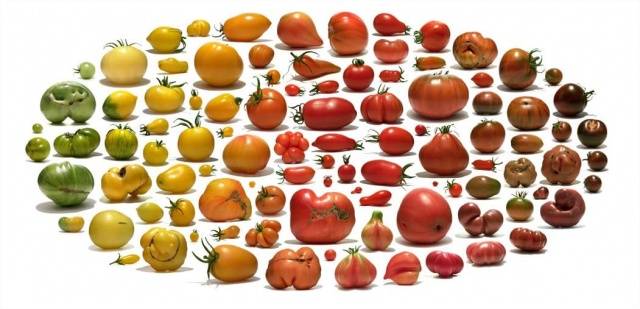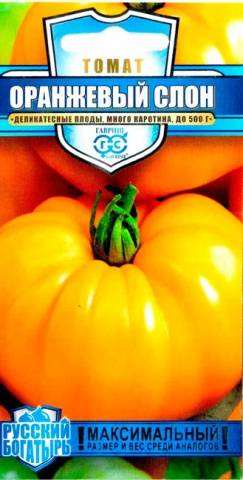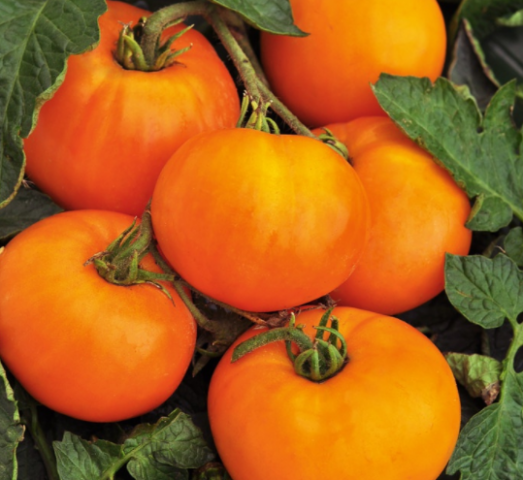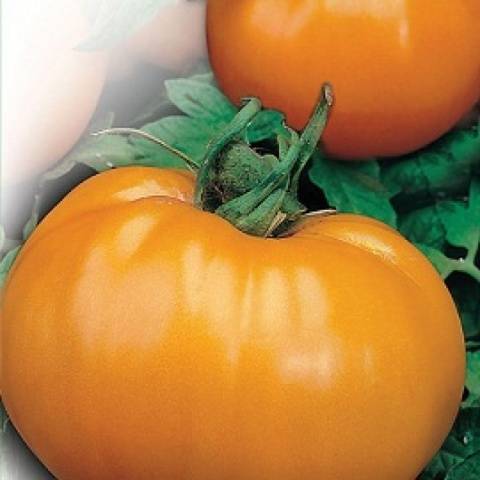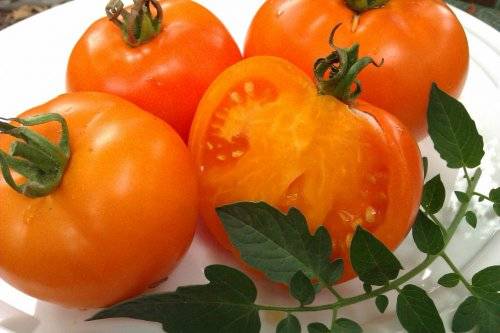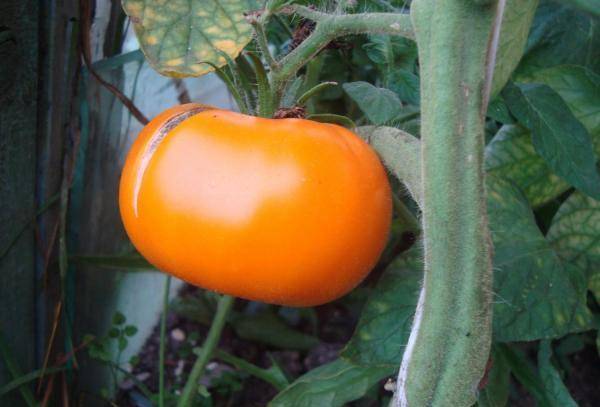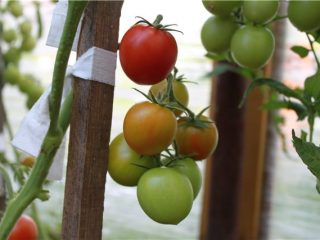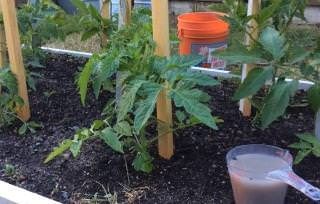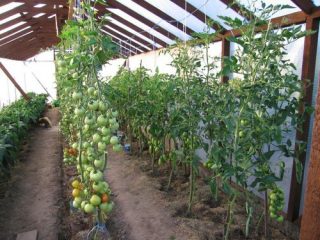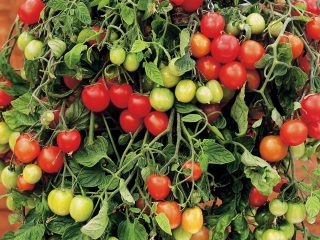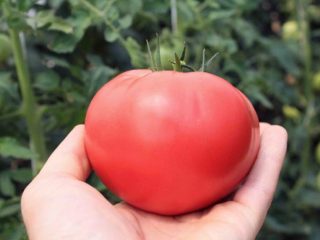Content
It is interesting for producers, who are also breeders, to work with serial tomatoes, since they often have similar genetic roots, but at the same time they may differ in a number of traits that are interesting for different gardeners. On the other hand, the passion of many people for collecting makes them want to try all the rest after purchasing one tomato from a whole series. Moreover, if the experience of growing the first grade was successful.
And this is more than justified in relation to the group of tomatoes, united by the fact that the word "elephant" appears in the name of the variety. All tomato "elephants" are quite unpretentious in their care, but they differ in a variety of colors, tastes and sizes of fruits and plants themselves.
In this article, we will focus on a tomato called Orange Elephant, which, by its characteristics, is the smallest representative of this tomato family. Other "elephants", such as the Pink Elephant or the Raspberry Elephant, are more suitable for their name in terms of the size of the fruits and bushes.
Description of the variety
Tomato The orange elephant, like most of its counterparts from this series of tomatoes, was obtained by breeders of the agricultural firm "Gavrish". It is sold in packets of the "Russian hero" series. In 2011, this tomato was included in the State Register of Breeding Achievements of Russia. It was recommended for cultivation in all regions of Russia in film or polycarbonate greenhouses.
Of course, in the southern regions of Russia, you can try to grow it in the open field. This condition is primarily due to the fact that this tomato has rather early ripening periods. Tomatoes ripen approximately 100-110 days after full sprouting. Therefore, in order to get a really early tomato harvest, it is advisable to plant seedlings in the ground, as early as possible, no later than May.
For southern regions with warm and sometimes hot springs, this is quite acceptable. But in the middle lane and in Siberia in May, tomato seedlings can be planted only in greenhouses, in extreme cases under film shelters. But the first ripe fruits when planting in a greenhouse can be obtained already at the end of June - in July.
Tomato Orange elephant belongs to the determinant type, which means that it is limited in growth. And, indeed, its height in open ground does not exceed 60-70 cm.When cultivated in a greenhouse, the bush can reach a height of 100 cm.Although, according to gardeners in some areas with a warm climate, the Orange Elephant tomato reached a height of 1.6 meters.
Since the Orange Elephant tomato is determinant, it does not need to be pinned. But the garter to the stakes will never be superfluous, because without it, bushes with ripening tomatoes can simply collapse to the ground. Leaves on bushes of medium size, dark green, traditional shape for tomatoes.
The description of the variety would be incomplete without such characteristics as yield, but here the Orange Elephant was not up to par. On average, from one bush, you can get from two to three kilograms of tomatoes. And from one square meter of planting, you can get, thus, up to 7-8 kg of fruit.
The variety is quite resistant to unfavorable weather conditions, it tolerates heat especially well, including abnormal ones.It sets fruit well in these conditions, therefore it is suitable for growing gardeners from the southern regions. The fruits are not prone to cracking. With regard to disease resistance, it is at an average level, on a par with most tomato varieties.
Fruit characteristics
Tomatoes of the Orange Elephant variety have the following characteristics:
- The shape of the fruit is traditionally round, but slightly flattened both above and below. Ribbing is observed at the base of the peduncle.
- At the stage of technical maturity, the fruits are green, when ripe they become bright orange.
- The skin is quite dense, smooth, the surface of the tomato is elastic.
- The pulp is tender, juicy, its color is soft orange. Tomatoes contain a large amount of beta-carotene, which prevents the aging process, and also has a beneficial effect on vision, immunity and skin regeneration processes.
-
Growers claim that the average weight of tomatoes is 200-250 grams. Perhaps such fruits can be achieved if the number of fruits in the clusters is normalized. According to gardeners, the average weight of tomatoes is only 130-170 grams.
- The taste of the tomatoes is assessed as excellent. The fruits have a rich, sweetish taste and pleasant aroma.
- The number of seed nests is average - from three to four.
- The fruit is best used for making salads and tomato juice of the original color. They are not very suitable for canning for the winter, except for the preparation of sauces, squash caviar and similar dishes.
- Of the entire family of elephants, it is the Orange Elephant that is best stored and transported.
- It ripens well in room conditions, without losing its taste.
- The fruiting period is long - tomatoes can set fruits and ripen for several months.
Advantages and disadvantages
Like most vegetables, the Orange Elephant variety has advantages that gardeners who choose this tomato for growing appreciate:
- Fruiting for a long period.
- Quite good preservation of fruits and transportability, unlike other tomato "elephants".
- The original color and excellent taste of the fruit.
- Increased healthiness of tomatoes, due to the content of various additional elements and vitamins.
- Disease resistance.
- Unpretentious cultivation.
Among the relative disadvantages are:
- Not the largest size of the fruit, compared to other tomato "elephants".
- Not as high yield as other comrades in the series.
Growing features
Since the Orange Elephant tomato is recommended to be grown in greenhouses in most regions, sowing seeds for seedlings can be done starting in March. If there is a desire to experiment, gardeners of the southern regions can try to sow this tomato in the soil of an unheated greenhouse in April, in order to later transplant it into open ground or leave it to grow under a roof all summer.
In such conditions, the seedlings will grow the maximum number of roots and will be able to quickly grow after planting.
When sowing seeds in fertile soil, top dressing is not required before planting tomatoes in a permanent place. It is necessary to plant seedlings, observing a sufficient distance between the plants (at least 30-40 cm), even if at first it seems that they are planted too far from each other.
It is highly desirable to tie the Orange Elephant seedlings to stakes immediately upon planting and mulch with straw or rotted sawdust. If everything is done correctly, further care will be reduced to watering once a week, top dressing twice a month and harvesting.
Reviews of gardeners
Reviews of gardeners about the Orange Elephant tomato are ambiguous, but generally positive.
Conclusion
Among the tomatoes with exotic fruit color, the Orange Elephant stands out, first of all, for its unpretentiousness. Therefore, novice gardeners who are afraid, due to their inexperience, to take on exotic varieties of tomatoes, can be advised to start with this particular variety.
